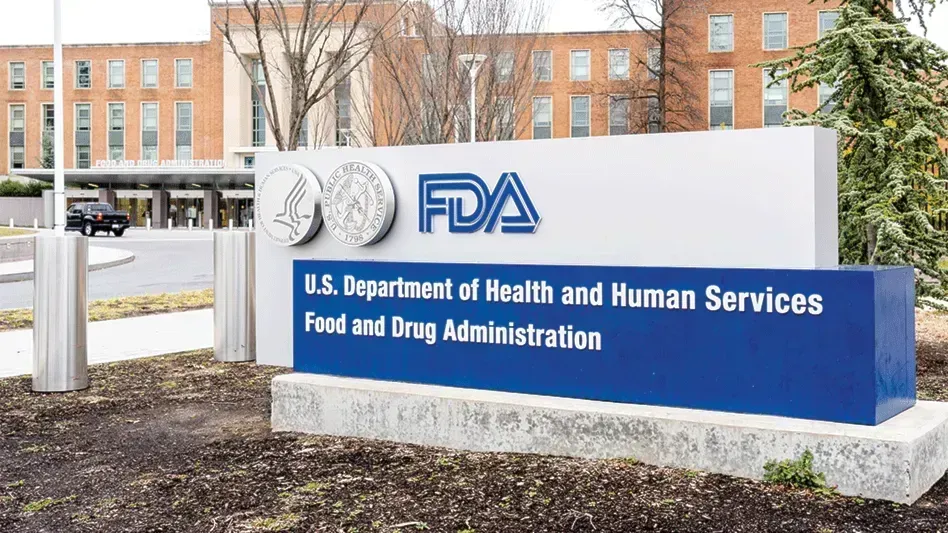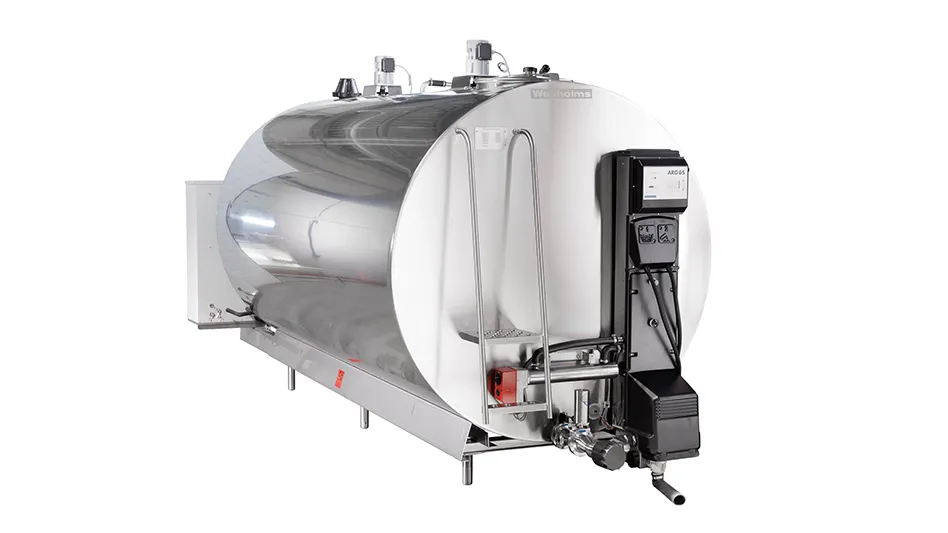Q. How do X-ray inspection systems work?
A. “The technology is based primarily on a density change,” said Robert Scott, Mettler-Toledo Safeline X-ray product manager for the Americas. As the X-ray passes through the food product, anything in it that is more dense than the product will make a change in the detection.
Safeline’s booklet, “Guide to X-ray Inspection,” provides further detail of the process: For most X-ray inspection systems, the basic principle of operation is the same. Product is conveyed between an X-ray tube head and an X-ray-sensitive photo-diode receiver. The photo diodes detect the level of X-rays that pass through the product and generate picture elements (pixels), which correspond to levels of gray. The pixels are combined into a coherent image that is analyzed automatically or by a person.
When product is placed between the tube and the receiver, X-rays passing through it are stopped by material in the product at a rate that corresponds to its density. So, a contaminant of higher density than the product will stop more X-rays and create an area of contrast in the resulting image.
X-ray technology is based primarily on the difference between the density and atomic characteristics of the product and the item to be detected. As the guide details, the detectability of a contaminant depends on the X-ray energy being used; at all levels, “the contrast is a function of the density of the contaminant compared with the food matrix,” thus making materials such as metal and some rock, stone and glass detectable.
In addition, when low energy is used, the contrast is enhanced for contaminants where the atomic number of the contaminant molecules is higher than those of the food. Foods consist primarily of carbon, hydrogen and oxygen; of these oxygen has the highest atomic number (8), so materials with significantly higher atomic weights will be detectable. Thus, when compared to the product, contaminants with similar or lower atomic characteristics must have significant density differential to be detectable and contaminants with similar density must have different atomic constituents for detection.
“All organic material consists of carbon, hydrogen and oxygen atoms,” said Ray Spurgeon, Eriez manager of inspection systems. Thus organic contaminants such a wood and insects “look exactly like food” on X-ray display screens.
Q. What can’t X-ray do?
A. There are things that X-ray cannot do, said Hermann Fleps, technical director for Loma Systems. “Some people think it’s a silver bullet — ‘It’s X-ray, it can detect anything.’ It can’t.”
If there is no difference between the bulk density and atomic characteristics of the food and the contaminant, the contaminant will most likely not be detectable. As a general rule, undetectable contaminants include hair, string, insects, wood and many plastics. “That’s a reality check for most people,” Spurgeon said. “This is its technological limitation.”
Even in similar items, detectability can vary. For example,
- glass — “lead crystal” glass will appear to the X-ray system as dense steel. However, it would be much more likely to find a contamination of a lighter soda glass from a jar or bottle, or a laboratory glass, which can even be lighter.
- stone — porosity, specific gravity and atomic constituents will affect the detectability of a stone. Most contain silicon, calcium, potassium, sodium and similar materials, detectable with “mid sensitivity” (2.0-2.5 milimeters). However, material containing metal ores would appear virtually as dense as metal.
- bone — to be detectable, bone must be calcified. Soft bones, such as the keel bone in a chicken, normally are not detectable. However, chicken rib bones and fan bones can be detected. Generally, land animals (e.g., pigs and cows) will have dense, calcified bones. In addition, the porosity of a bone will affect its detectability.
A simple rule of thumb for an X-ray sytems’ detectability is: If it floats on water, it probably cannot be detected by X-ray, Fleps said. If it sinks, it will most likely be detectable.
Q. When should I use an X-ray system rather than a metal detector?
A. “Over the last 10 years, X-ray has really evolved in the food processing industry because it can detect more than just metal,” Fleps said.
“When you’re dealing with any packaged product in a foil pouch, that’s clearly one area where X-ray stands head and shoulders over metal detection,” Spurgeon said. Although a metal detector could be placed further upline from the sealing area, such placement could negatively impact consumer safety. Citing peanut butter jars as an example, Spurgeon explained that after a jar is filled with the product, it is topped with a foil seal, then the lid. Above the sealer is machinery that could introduce a contaminant in the short period of time between filling and sealing, he said. But while some metal detectors can be set to mask out aluminum, this decreases the system’s sensitivity, potentially enabling contaminants to get through undetected.
X-ray also is a better option when the product is conductive. For example, said Dick Wyman, Safeline regional sales manager for the Southern U.S., cheese has a very high moisture content, which makes it very conductive and creates a product effect negating detection abilities of metal detectors. “Products like that are almost a no-brainer for X-ray,” he said.
“Companies want to optimize performance and minimize foreign objects in their product,” Spurgeon said. “So if they’re using a metal detector for a conductive product, they’re getting substandard performance.”
However, Wyman said, in most cases he has not found the industry to be replacing metal detectors with X-ray, but that the two systems are being used together — not necessarily on the same lines, but within a single plant.
In fact, because X-ray equipment is significantly more expensive, if both systems would work equally well, he said, “then the obvious choice is a metal detector.”
“We don’t see X-ray technology ever replacing metal detection. It’s more a supplement,” Scott added. Because the systems have different capabilities, they are complementary. “So you would get the best results using both, but we don’t have anyone who has done that yet.”
Q. Where should I place the detector on my line?
A. Most experts recommend that X-ray detectors be put at the end of the line. “The idea is to have that technology as close to the back door as possible,” Spurgeon said. “The reality is, I don’t care how good you are with product coming in, all it takes is one disgruntled employee or nut or bolt from a filler head.”
Because HACCP dictates that the end of the line is an inspection point, and because it is the final check for consumer safety, this is where most X-ray systems are placed, Scott said. When a system is placed further upstream, it generally is for a different purpose, such as detecting hard contaminants that could damage production machinery, or ensuring that supplies being received are contaminant free.
In fact, Scott said he expects this use to increase in upcoming years as more processors hold suppliers accountable for the quality of incoming goods; some plants are even having detection equipment installed in supplier plants to ensure ingredients are contaminant free.
Q. Is an X-ray System safe for my employees?
A. “I think safety is still the biggest question we get: Is it safe to be around?” Fleps said. His answer? “It’s extremely safe. You get more exposure to X-ray when you stand outside in the sun than when you stand next to our X-ray system.”
FDA classifies the technology used for the food industry the same as it does airport X-ray screening. In fact, food processing X-ray equipment is similar to the machines found in airports, but food equipment generally is automated, so a person doesn’t have to stand in front of the machine analyzing the screen.
“The emissions are so very, very low, people can sit there for hours on end watching this equipment,” Spurgeon said. “It is a very benign technology.” In addition, the emissions are present only when the machine is on. In that way, Spurgeon explained, it is like a flashlight. Once it is turned off, no emissions remain.
As detailed below, FDA regulations govern the manufacture of the equipment to ensure that the equipment contains the emissions and people cannot accidently reach in or be exposed to the beams.
Q. Will an X-ray System damage my product?
A. The low voltage of the food-approved systems also ensures against radiation of a product. But, Spurgeon added, you don’t want the product to sit in a beam for a length of time. If the line is stopped for any reason, the X-ray system also should shut off.
Q. What sort of regulations govern the use of X-ray systems?
A. Each state has its own regulations for the systems, governed by the state’s departments of health and/or environmental protection; as such, they vary from state to state. But most manufacturers do keep up to date on these and will work with receiving plants to ensure compliance.
In addition, FDA governs the manufacture of the systems according to very strict guidelines, Spurgeon said.
Regulations require, among other specifications, that it not be possible for any part of the human body to be inserted through any aperture or through any port into the primary beam; that all doors and access panels have safety interlocks; that all systems have additional controls to terminate the generation of X-rays; that indicators display “X-ray on”; and that specific cautionary warning labels be permanently affixed or inscribed on the system.
Q. What is the cost of X-ray equipment relative to a metal detection system?
A. According to the manufacturers, X-ray systems can cost anywhere from two to ten times the cost of a metal detector. And, the cost is not expected to decrease in the future.
“I see it the other way,” Wyman said. “I see it going up.”
At one point, some manufacturers did attempt to make and sell systems for less, he said, with less-than-positive results.
“There’s a whole graveyard of X-ray companies out there who sold (equipment) at a cost level that doesn’t make sense for the manufacturer.” As a result, the systems were not reliable and the companies could not offer the needed support, he said.
However, Wyman and Scott do see the value increasing for the price, as quality-control software continues to be developed.
Q.What’s new with X-ray today and into the future?
A. In the past, X-ray systems often were unreliable and difficult to set up and use. Today, however, manufacturers are paying more attention to these areas, increasing their reliability in the harsh settings of food plants and, Wyman said, “putting a lot of effort into making it user friendly.” Because of this, he said, “I think that the change we are seeing in the market is that it’s an accepted detection device.”
“What we don’t really believe this technology will ever do is detect plastic, hair and insects,” Scott said. “This technology will never be able to do that.” Instead, he said, he sees an increase in software technology for the systems to look for other attributes of product quality, such as number of items in a package, broken pieces or inclusion of a premium (e.g., a toy in a cereal box). The systems will be able to be programmed to detect such issues. “So that if it sees something that is incorrect, software will have been written to remove it from the line,” he said. “If the product can stand up to X-ray, it can easily verify that it is there.”
Spurgeon agrees that inspection of product integrity is a growing use of X-ray technology. With software advancements, new developments are constantly evolving, he said, with such abilities as weight checking and shape recognition becoming increasingly available, and software tools being able to be retrofit into a plant’s current system. “As an image technology, it is almost limitless,” he said.
CONCLUSION. Whether your plant uses X-ray or metal detection technology is really secondary to the use of a detection system at all, and as a general rule, this is the feeling of the industry. “As consumers, we ought to feel very good about the products we consume,” Spurgeon said. Ensuring consumer safety and detecting and removing contaminants is extremely important to the survival of a company, he explained. “One contamination can undo years of strict brand building and loyalty at the drop of a hat.” QA
The author is Staff Editor of QA magazine.

Explore the April 2008 Issue
Check out more from this issue and find you next story to read.
Latest from Quality Assurance & Food Safety
- Food Safety Summit Keynote Focuses on Food Safety Leadership
- FDA Publishes Landmark Final Rule to Enhance the Safety of Agricultural Water
- The Wendy's Company Reports 2023 Corporate Responsibility Progress
- Local Bounti Opens New Controlled Environment Agriculture Facility
- Tröegs Partners with Patagonia Provisions to Introduce Kernza Lager
- Neogen Launches New Molecular Method for Detection of Two Salmonella Serotypes
- Standard Meat Company Appoints Keith Blanks as Chief Commercial Officer
- USDA Finalizes Policy to Protect Consumers from Salmonella in Raw Breaded Stuffed Chicken Products




